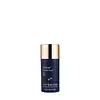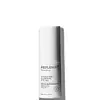What's inside
What's inside
 Key Ingredients
Key Ingredients

 Benefits
Benefits

 Concerns
Concerns

No concerns
 Ingredients Side-by-side
Ingredients Side-by-side

Water
Skin ConditioningCaprylyl Methicone
Skin ConditioningGlycerin
HumectantJojoba Esters
EmollientNiacinamide
SmoothingPEG-16 Macadamia Glycerides
EmollientCetearyl Alcohol
EmollientGlyceryl Stearate
EmollientCeteareth-20
CleansingPEG-100 Stearate
Caprylic/Capric Triglyceride
MaskingAlcohol Denat.
AntimicrobialPalmitoyl Tripeptide-38
Skin ConditioningCaffeine
Skin ConditioningS-Mu-Conotoxin Cniiic Acetate
Skin ConditioningCopper Lysinate/Prolinate
Skin ConditioningHydrolyzed Lupine Protein
Skin ConditioningTerminalia Ferdinandiana Fruit Extract
AntioxidantMethylglucoside Phosphate
Skin ConditioningSodium Hyaluronate
HumectantSaccharomyces Cerevisiae Extract
Skin ConditioningArginine
MaskingGlycine
BufferingHydroxypropyl Cyclodextrin
MaskingCarbomer
Emulsion StabilisingHexylene Glycol
EmulsifyingCitric Acid
BufferingSodium Hydroxide
BufferingEthylhexylglycerin
Skin ConditioningCaprylyl Glycol
EmollientPhenoxyethanol
PreservativeWater, Caprylyl Methicone, Glycerin, Jojoba Esters, Niacinamide, PEG-16 Macadamia Glycerides, Cetearyl Alcohol, Glyceryl Stearate, Ceteareth-20, PEG-100 Stearate, Caprylic/Capric Triglyceride, Alcohol Denat., Palmitoyl Tripeptide-38, Caffeine, S-Mu-Conotoxin Cniiic Acetate, Copper Lysinate/Prolinate, Hydrolyzed Lupine Protein, Terminalia Ferdinandiana Fruit Extract, Methylglucoside Phosphate, Sodium Hyaluronate, Saccharomyces Cerevisiae Extract, Arginine, Glycine, Hydroxypropyl Cyclodextrin, Carbomer, Hexylene Glycol, Citric Acid, Sodium Hydroxide, Ethylhexylglycerin, Caprylyl Glycol, Phenoxyethanol
Cyclomethicone
EmollientDimethiconol
EmollientWater
Skin ConditioningPhospholipids
Skin ConditioningSodium Hyaluronate
HumectantTea-Polyphosphate
EmulsifyingChlorella Protothecoides
AbrasiveCurcuma Longa Callus Extract
Skin ProtectingAscorbyl Palmitate
AntioxidantUbiquinone
AntioxidantTocopheryl Acetate
AntioxidantSuperoxide Dismutase
AntioxidantCaprylyl Glycol
EmollientAscorbic Acid
AntioxidantSorbic Acid
PreservativePhenoxyethanol
PreservativeAlternatives
Ingredients Explained
These ingredients are found in both products.
Ingredients higher up in an ingredient list are typically present in a larger amount.
Caprylyl Glycol is a humectant and emollient, meaning it attracts and preserves moisture.
It is a common ingredient in many products, especially those designed to hydrate skin. The primary benefits are retaining moisture, skin softening, and promoting a healthy skin barrier.
Though Caprylyl Glycol is an alcohol derived from fatty acids, it is not the kind that can dry out skin.
This ingredient is also used as a preservative to extend the life of products. It has slight antimicrobial properties.
Learn more about Caprylyl GlycolPhenoxyethanol is a preservative that has germicide, antimicrobial, and aromatic properties. Studies show that phenoxyethanol can prevent microbial growth. By itself, it has a scent that is similar to that of a rose.
It's often used in formulations along with Caprylyl Glycol to preserve the shelf life of products.
Sodium Hyaluronate is hyaluronic acid's salt form. It is commonly derived from the sodium salt of hyaluronic acid.
Like hyaluronic acid, it is great at holding water and acts as a humectant. This makes it a great skin hydrating ingredient.
Sodium Hyaluronate is naturally occurring in our bodies and is mostly found in eye fluid and joints.
These are some other common types of Hyaluronic Acid:
Learn more about Sodium HyaluronateWater. It's the most common cosmetic ingredient of all. You'll usually see it at the top of ingredient lists, meaning that it makes up the largest part of the product.
So why is it so popular? Water most often acts as a solvent - this means that it helps dissolve other ingredients into the formulation.
You'll also recognize water as that liquid we all need to stay alive. If you see this, drink a glass of water. Stay hydrated!
Learn more about Water